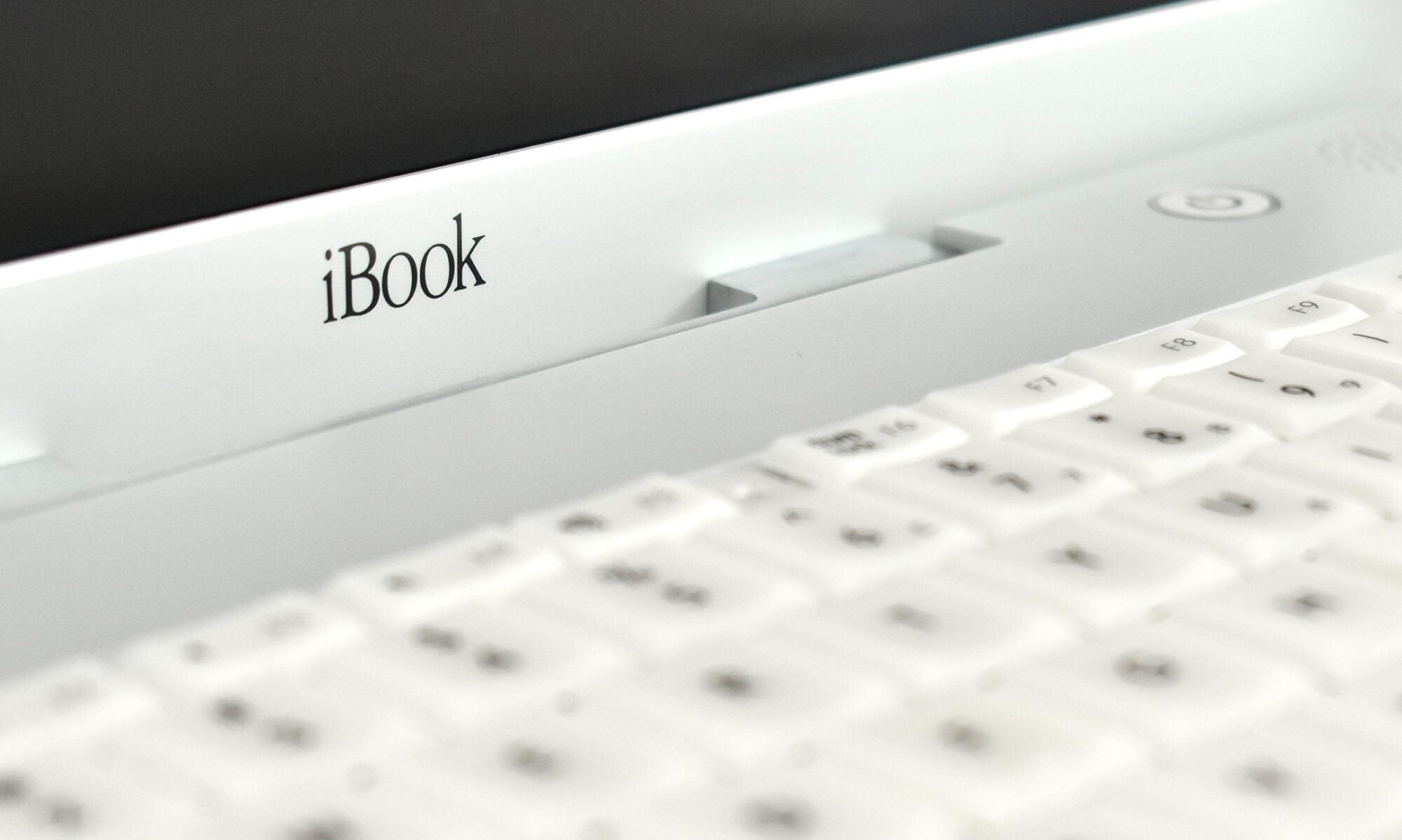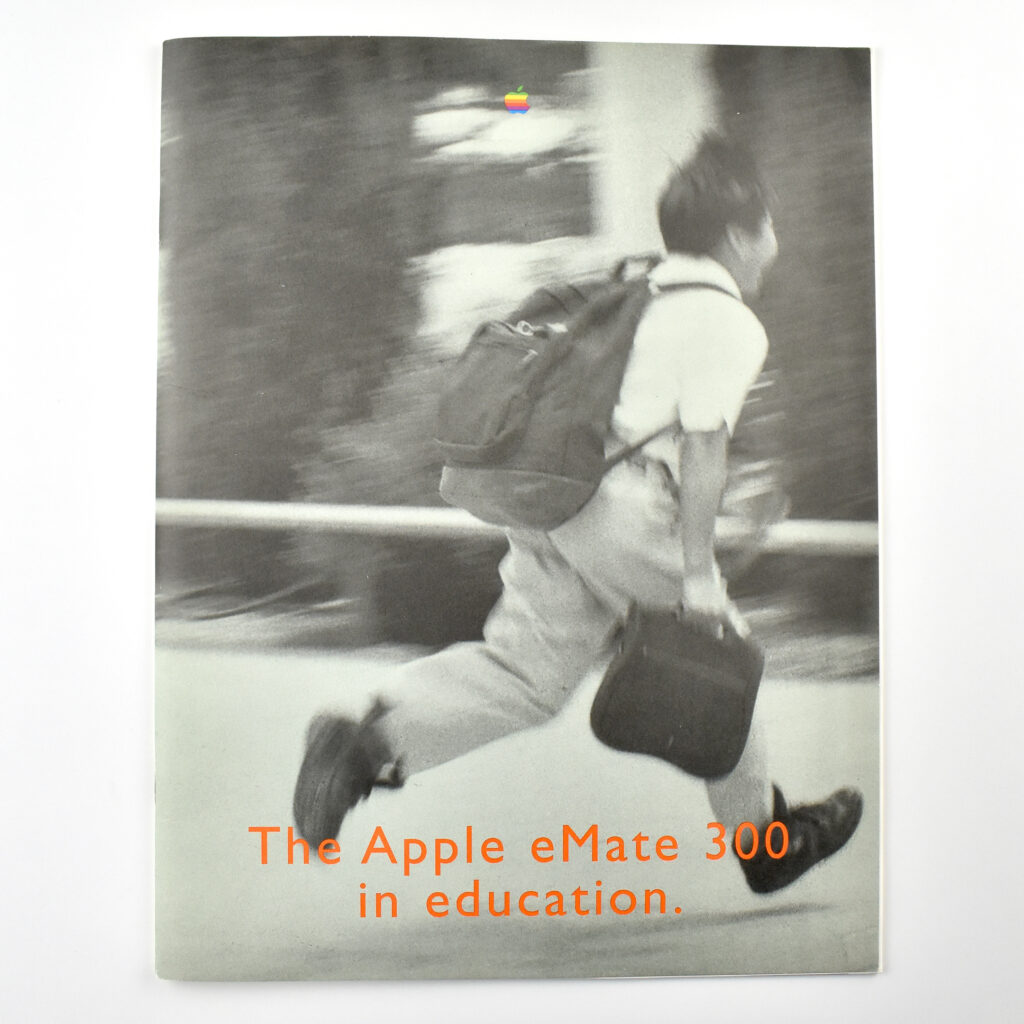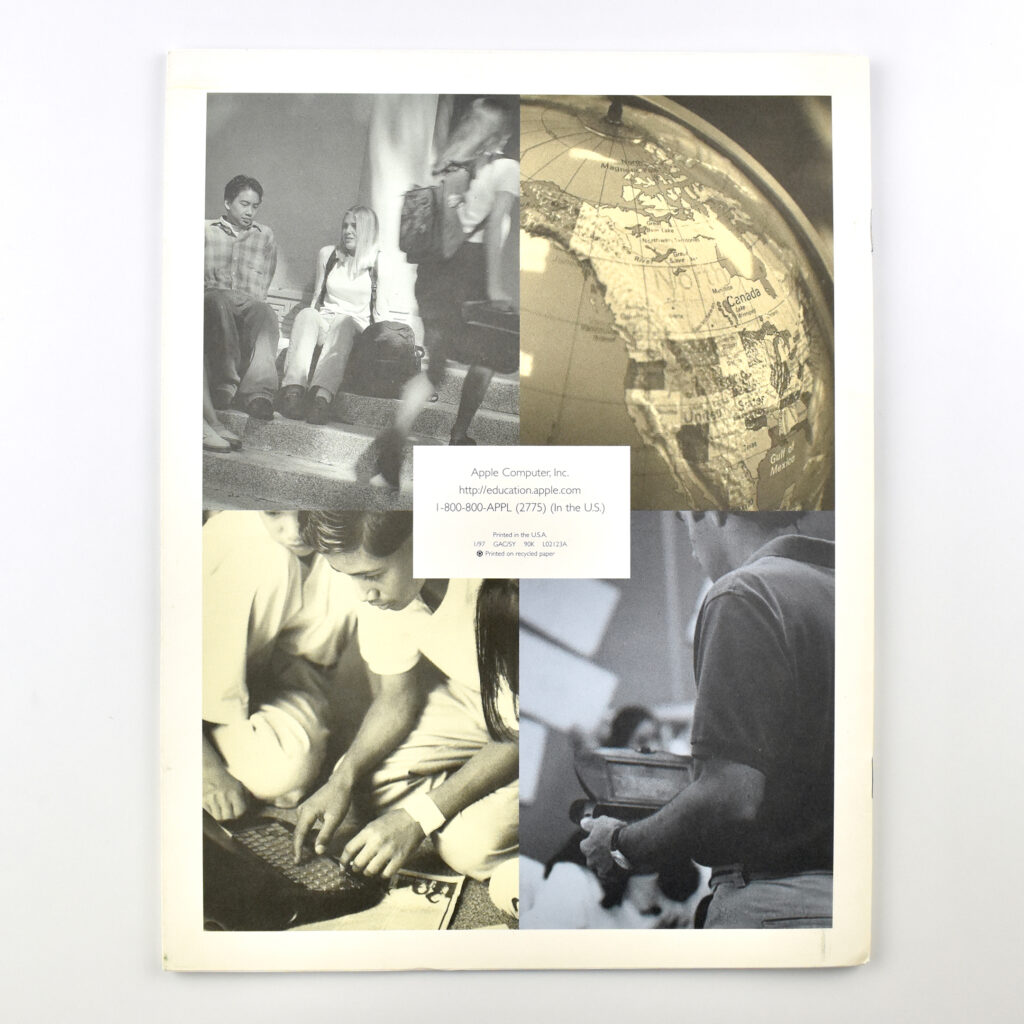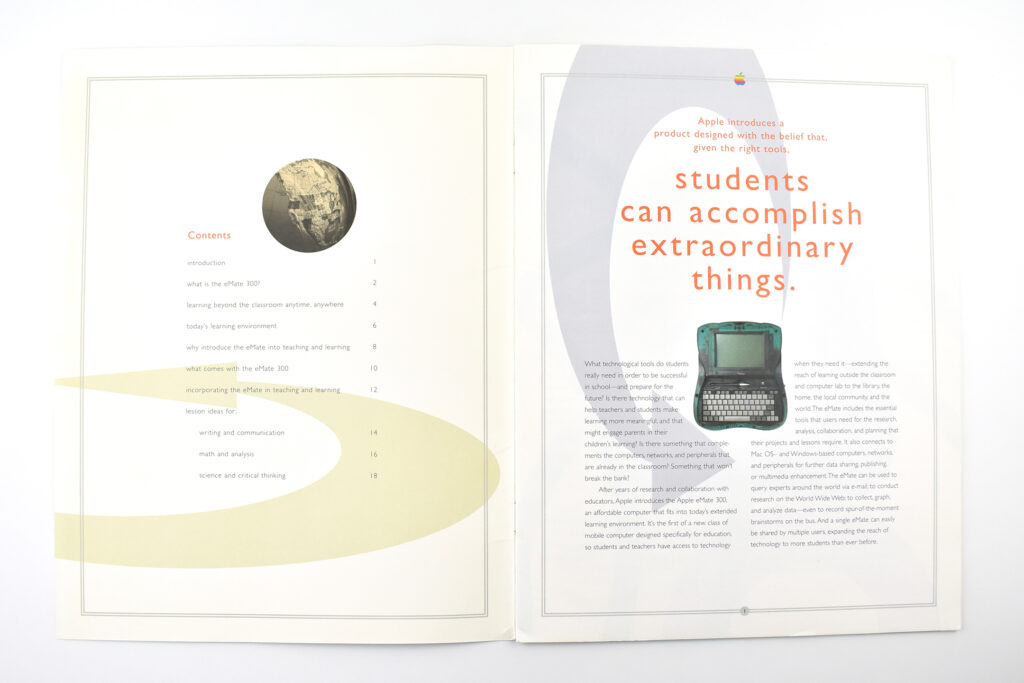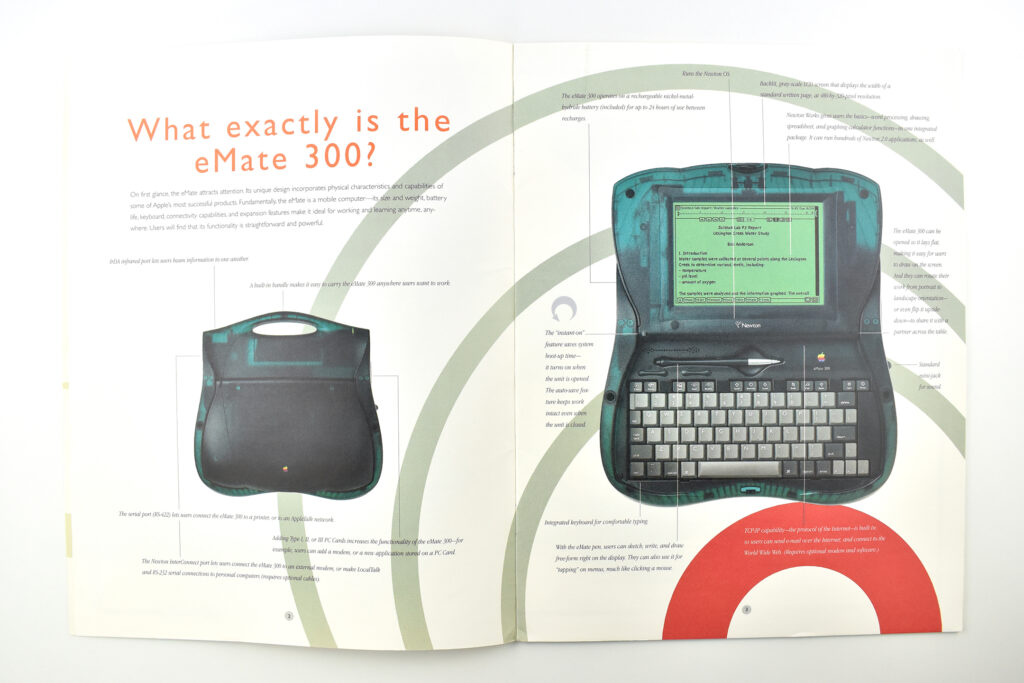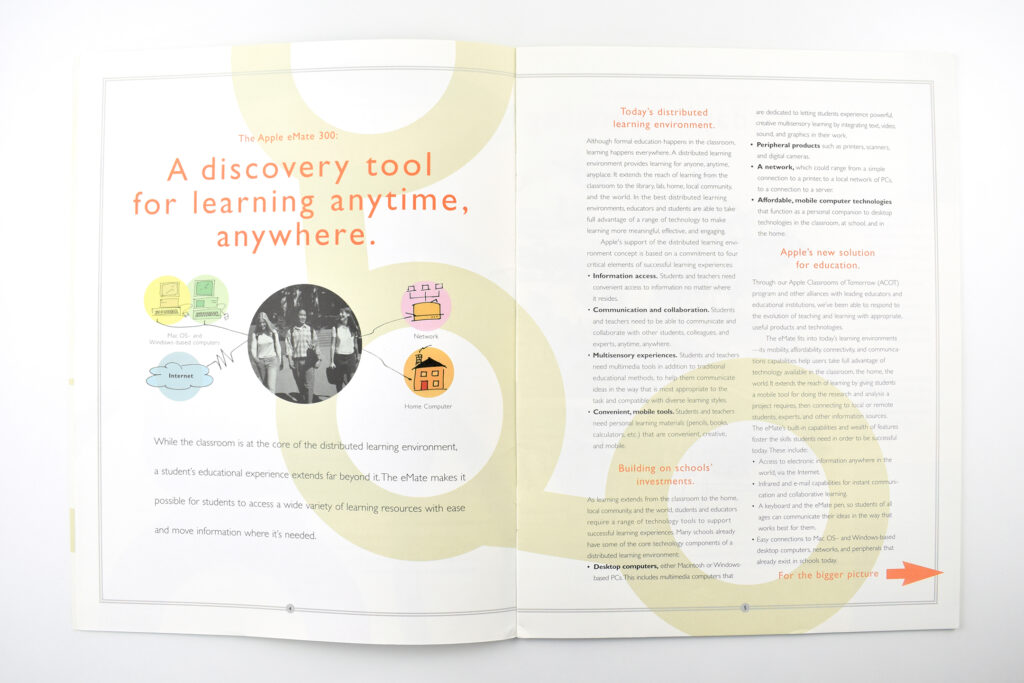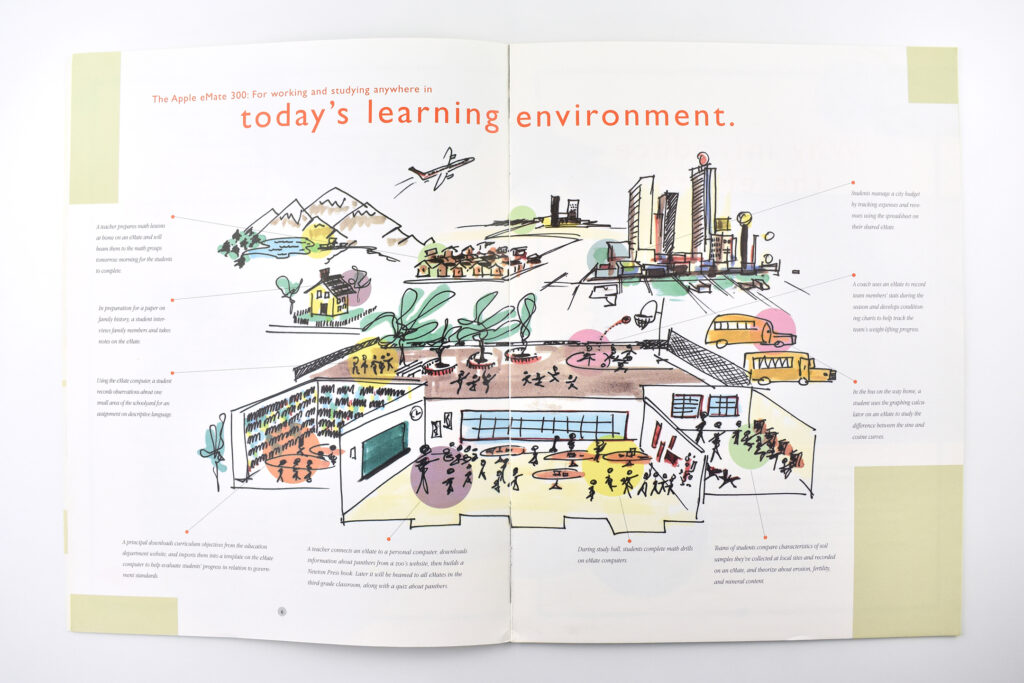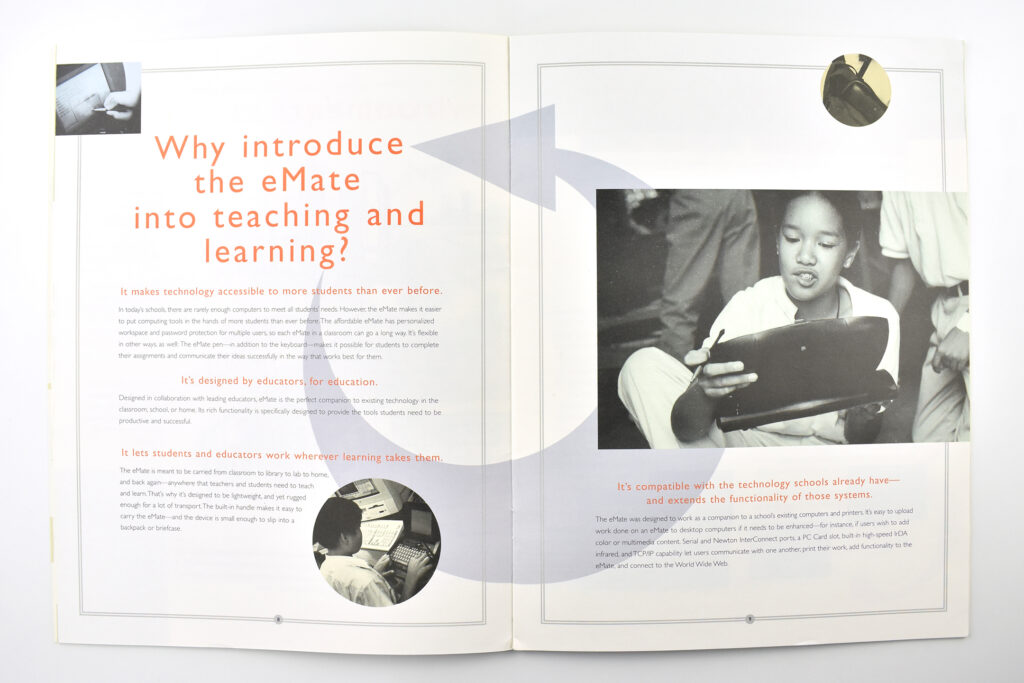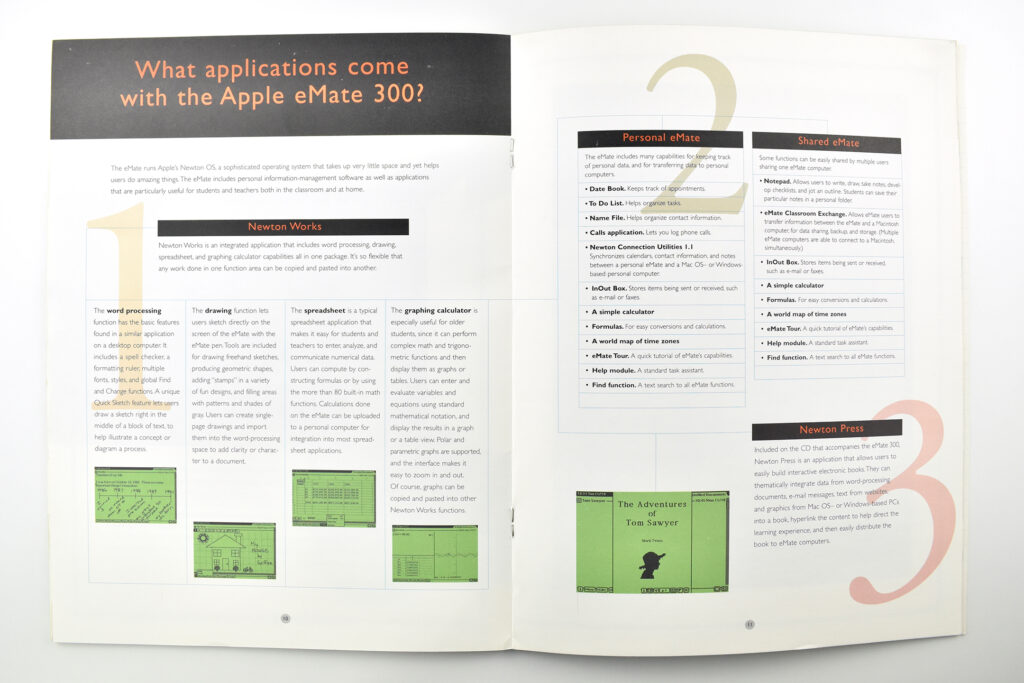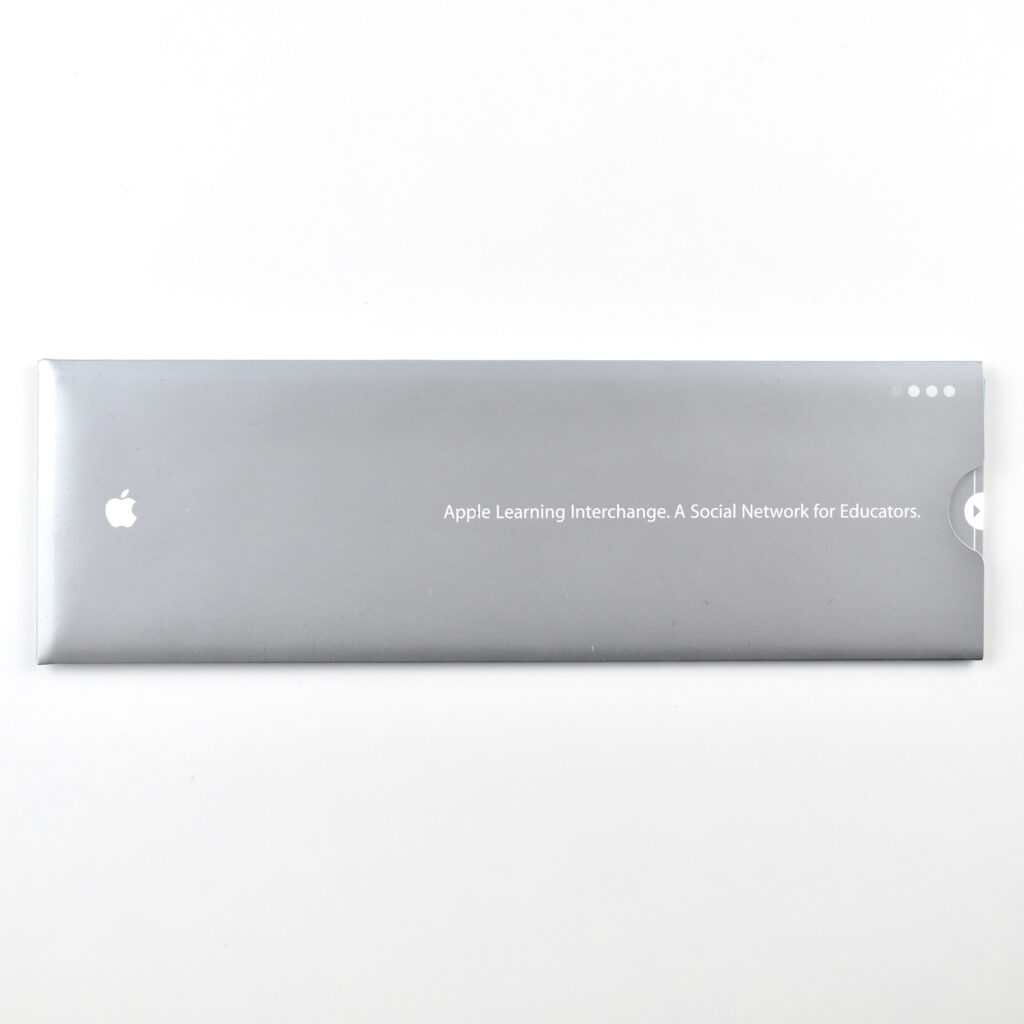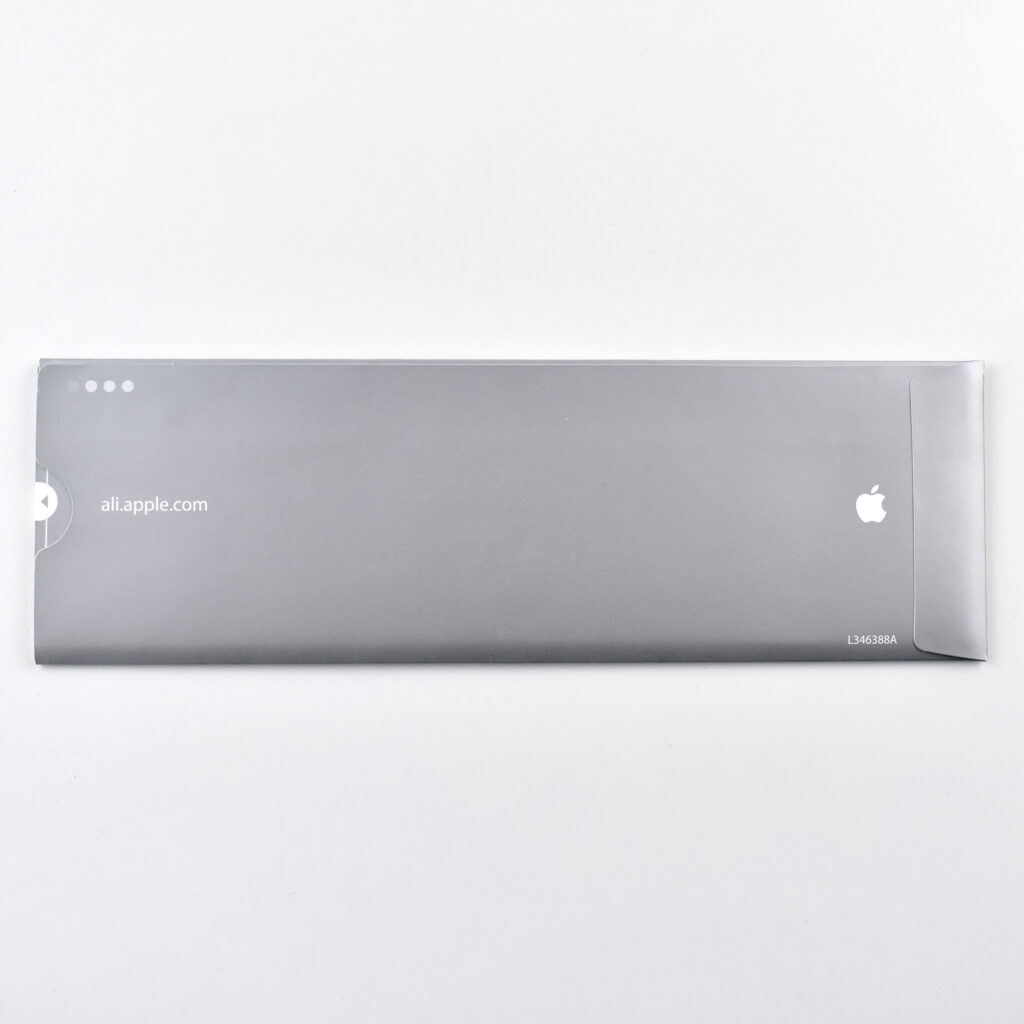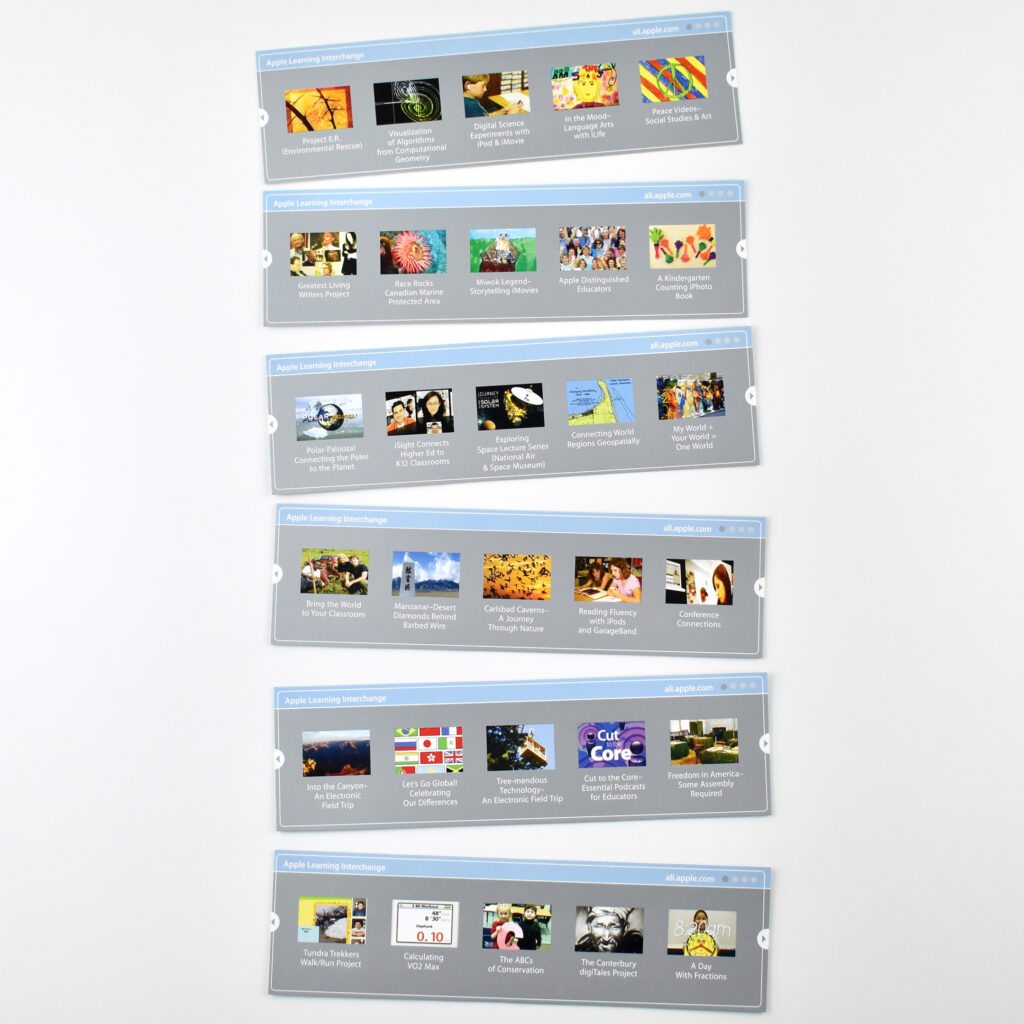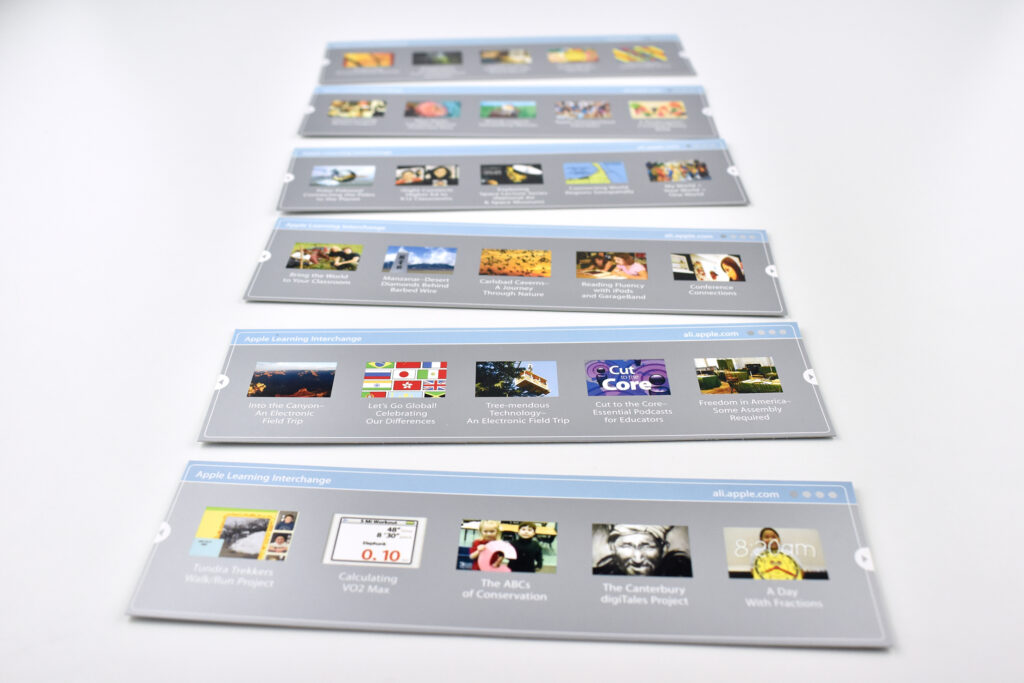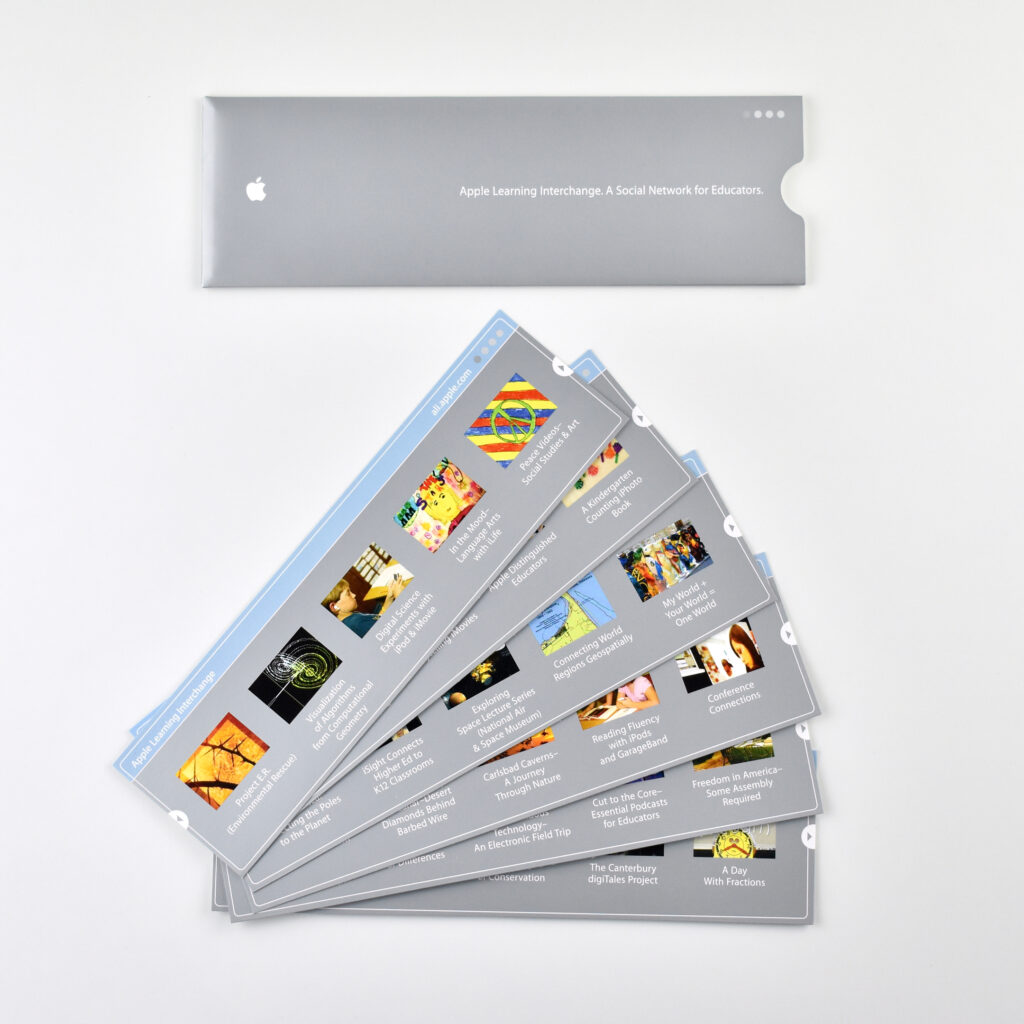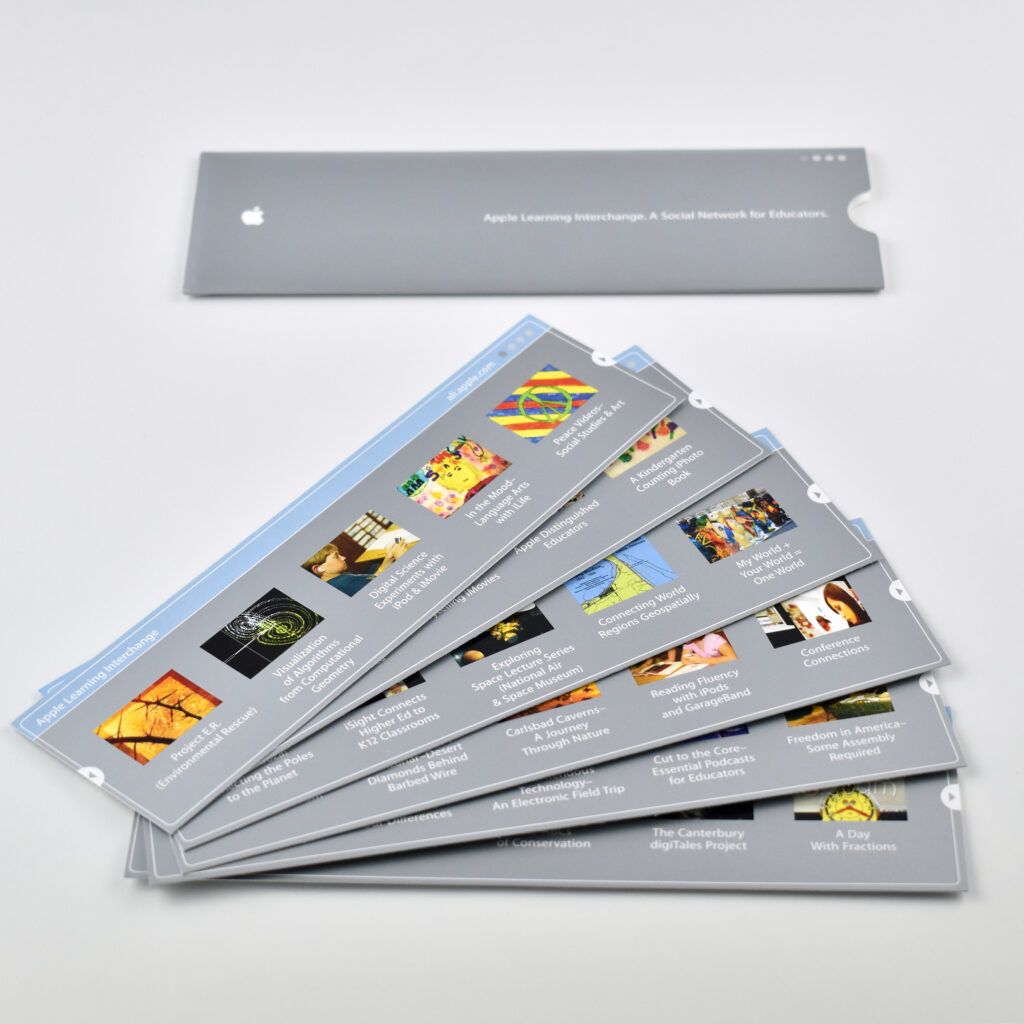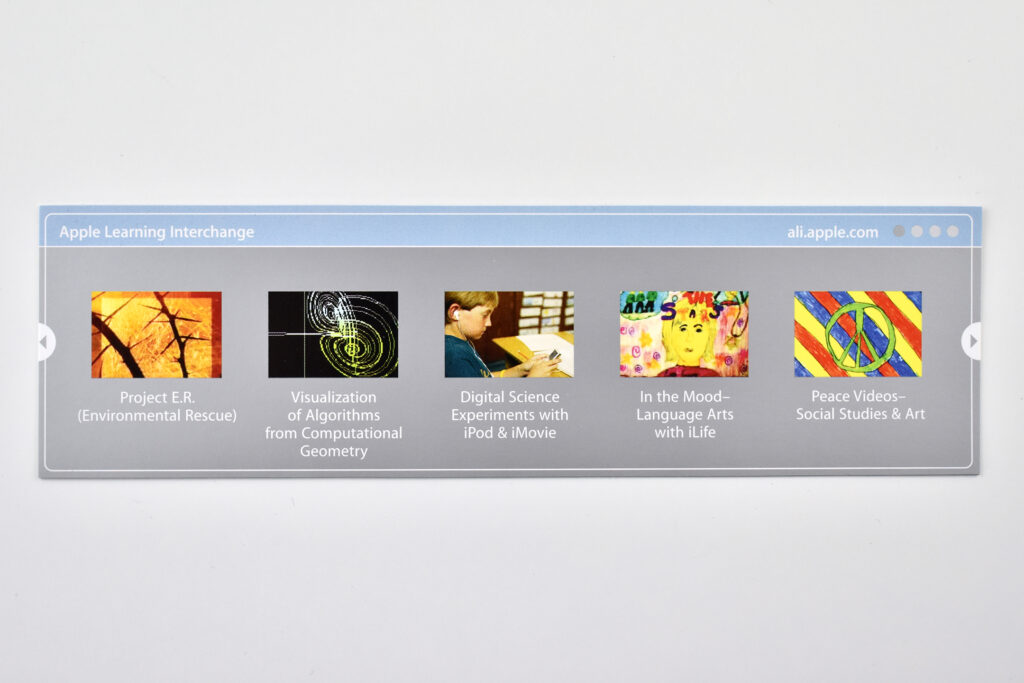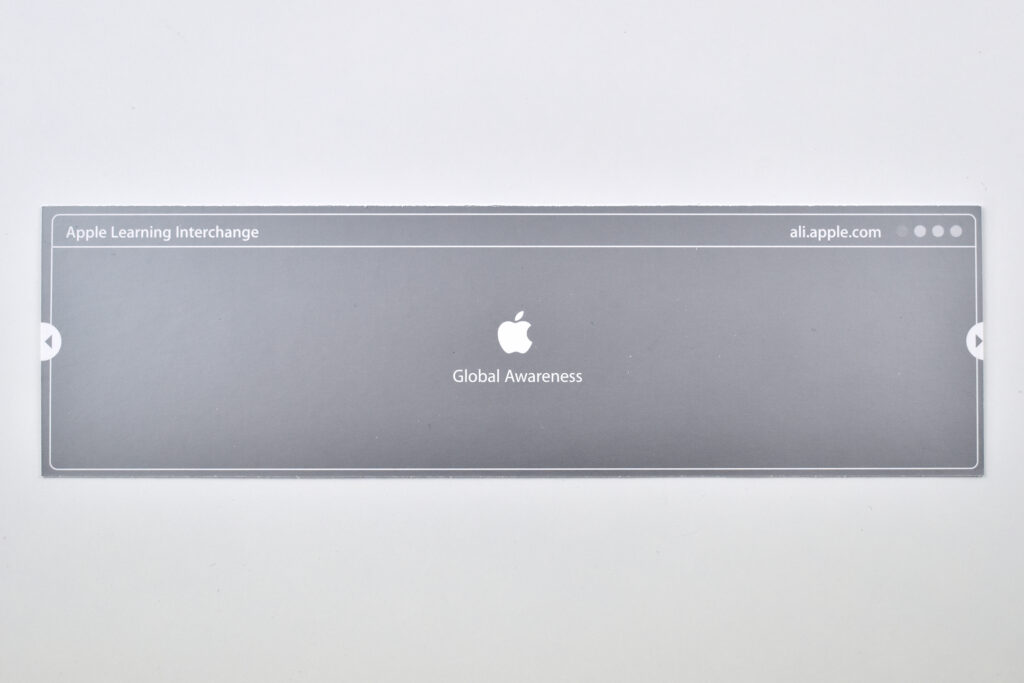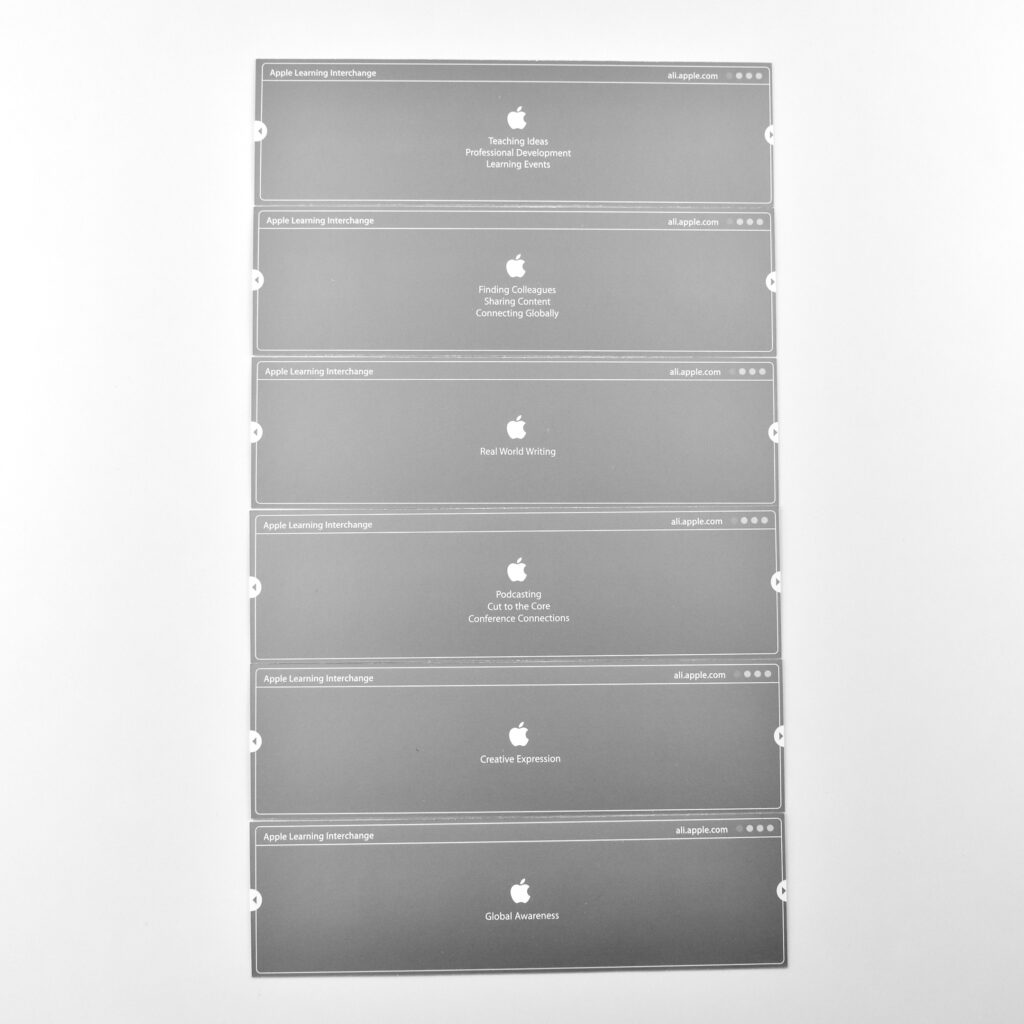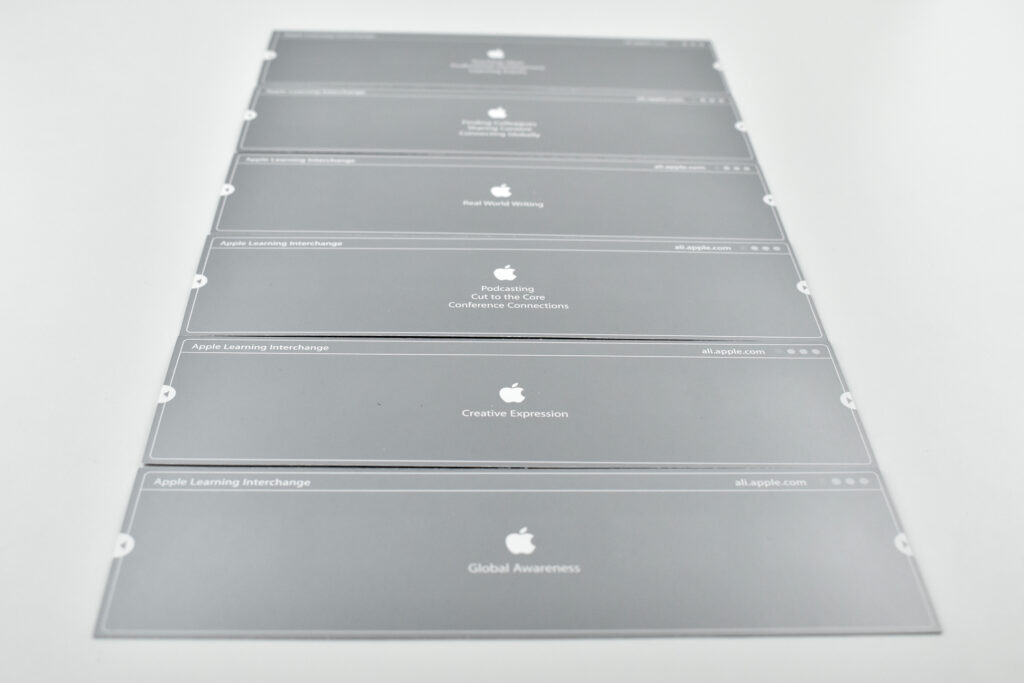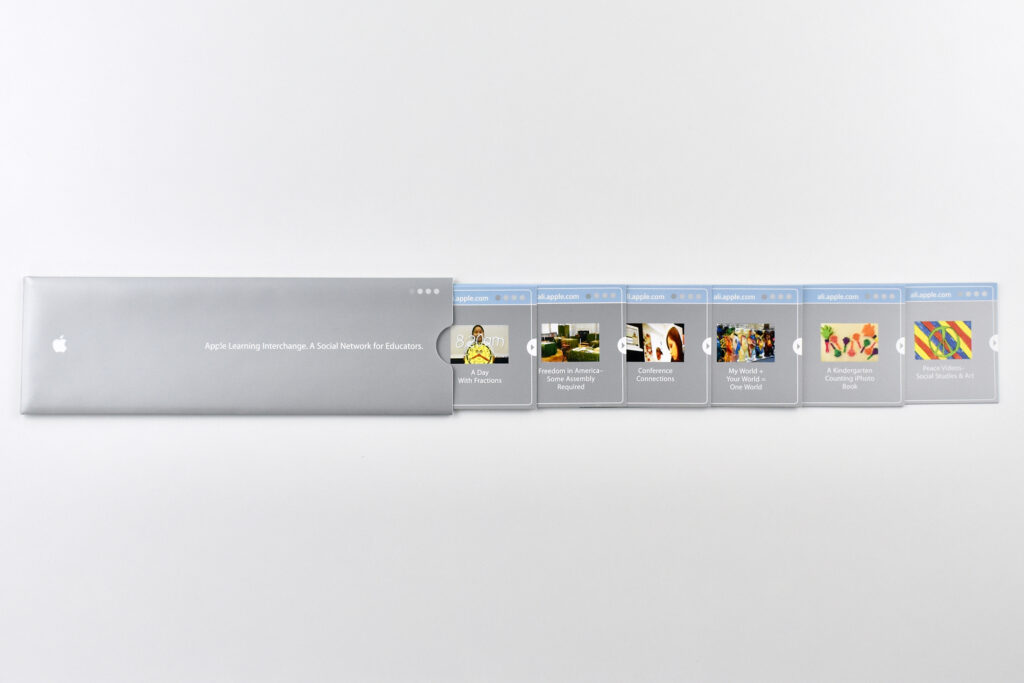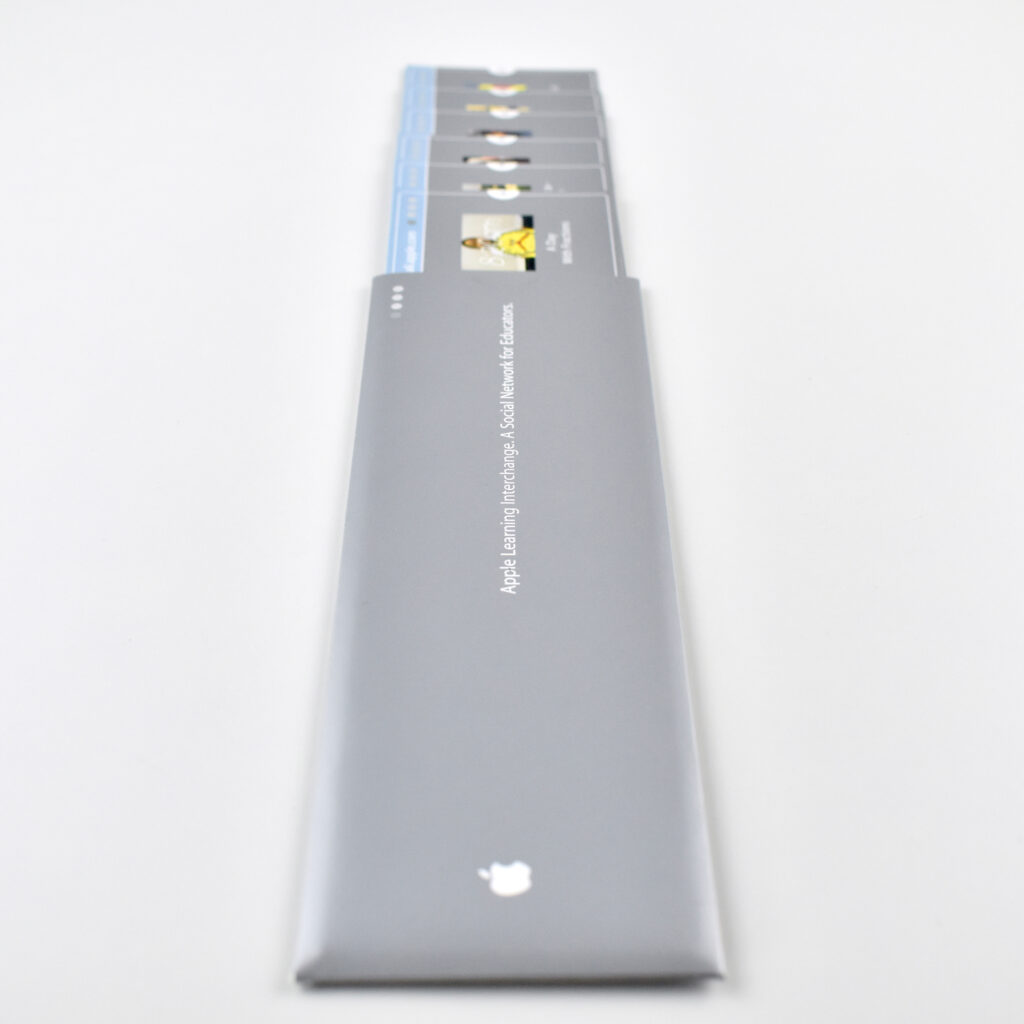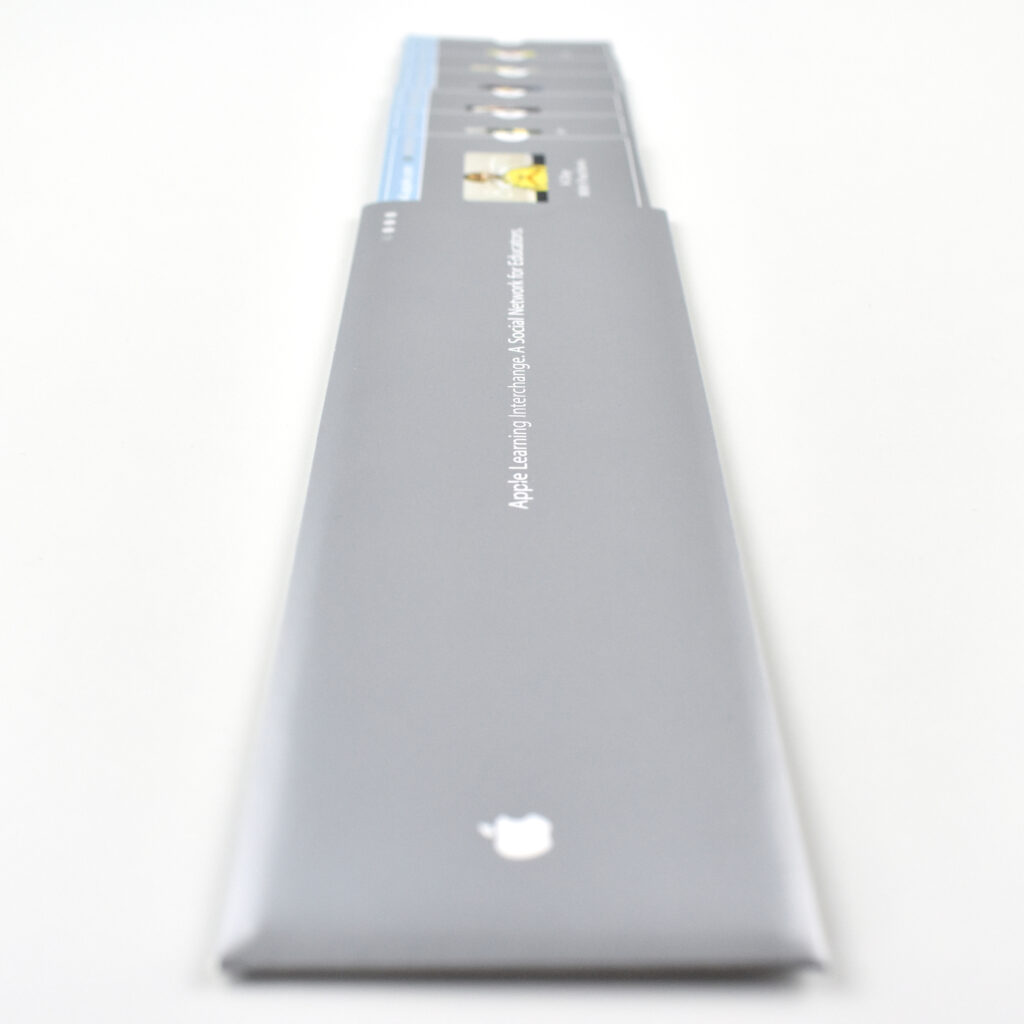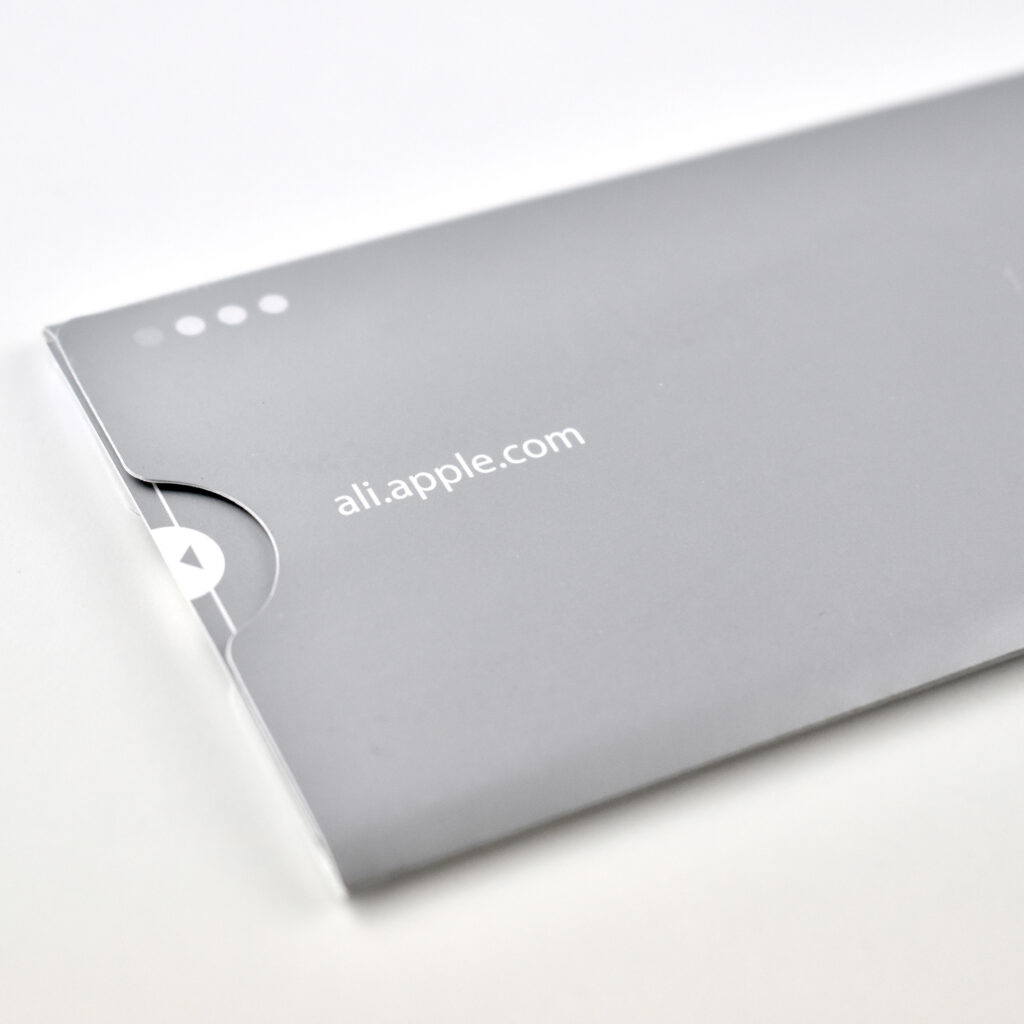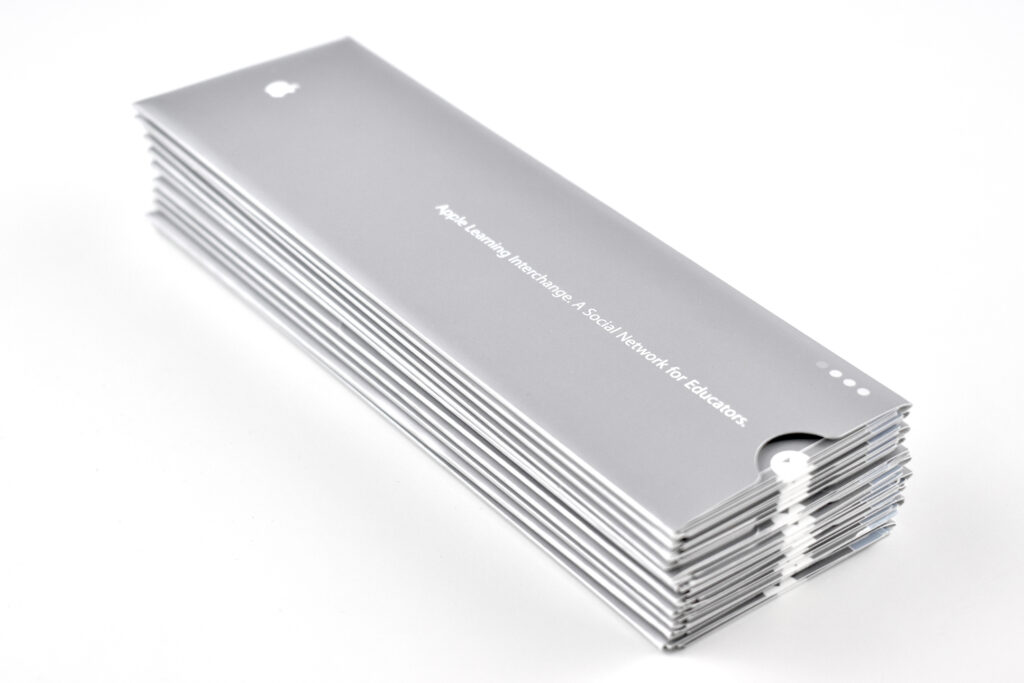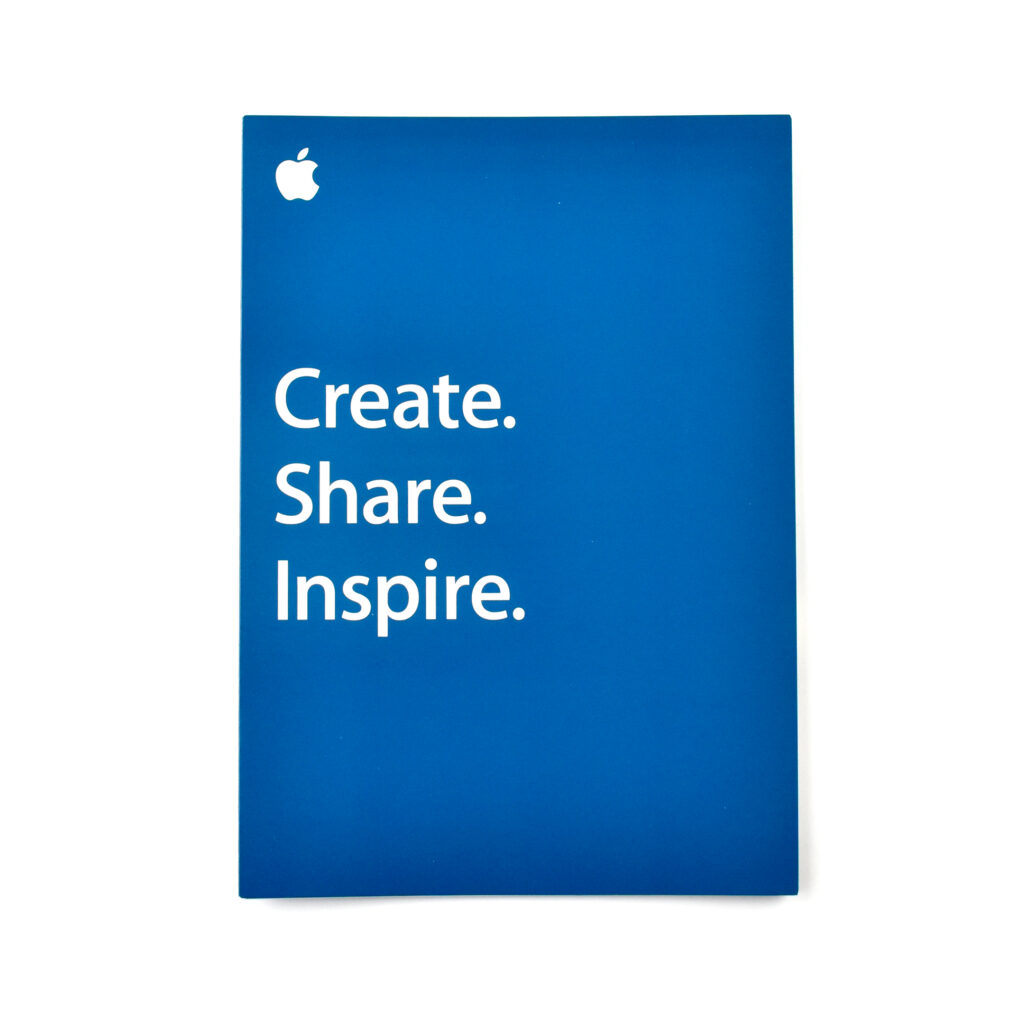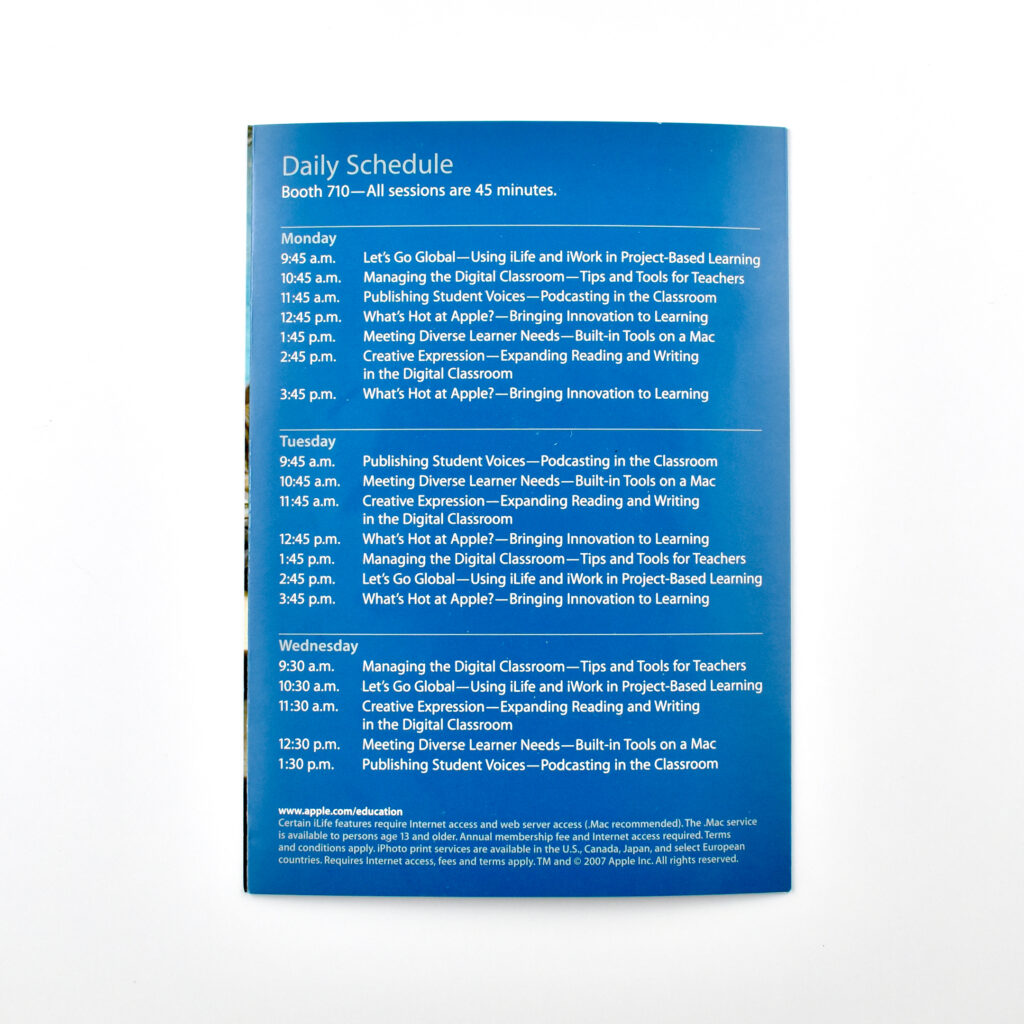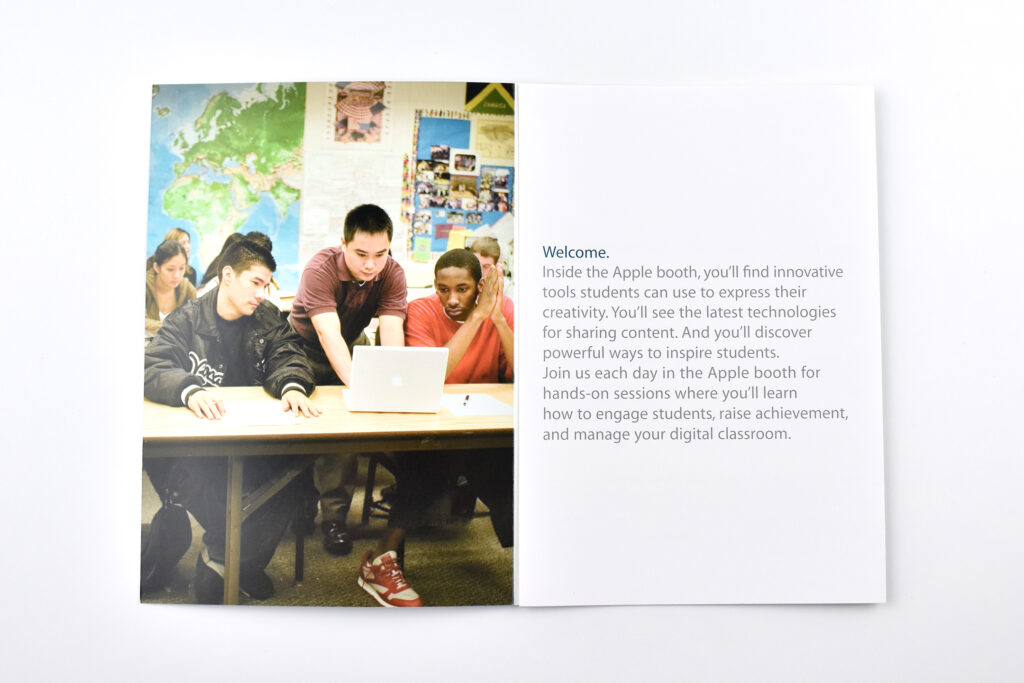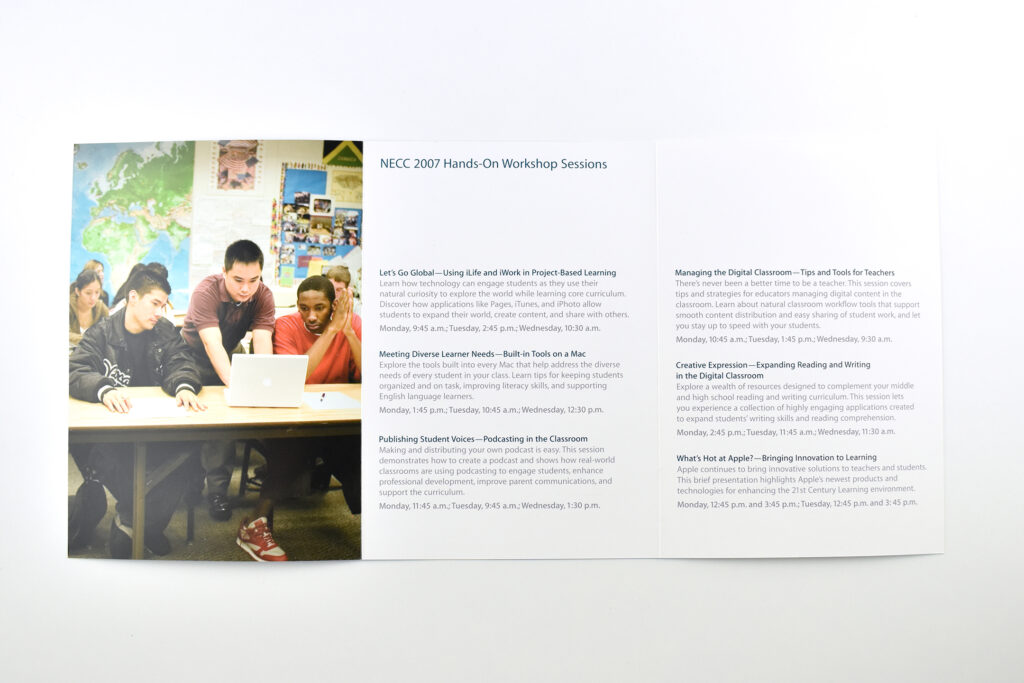This brochure is titled “The Apple eMate 300 in education.” and is printed on matte, textured paper.
Introduced in 1997, the eMate 300 was a personal digital assistant (PDA) designed specifically for the education market as a low-cost, laptop-like device that ran the Newton operating system. The eMate 300 was the only Newton that had a built-in keyboard, and like all other Newton devices, used a stylus and had a touch screen.
This brochure is a comprehensive description of Apple’s vision for the eMate 300 in education. It included the following sections: introduction; what is the eMate 300?; learning beyond the classroom anytime, anywhere; today’s learning environment; why introduce the eMate into teaching and learning; what comes with the eMate 300; incorporating the eMate in teaching and learning; and lesson ideas for writing and communication, math and analysis, and science and critical thinking.
The introduction begins with the statement, “Apple introduces a product designed with the belief that, given the right tools, students can accomplish extraordinary things.”
The design of this brochure uses pastel colors and a decidedly late-1990s design aesthetic. While the majority of the brochure uses the Gill Sans font, the same font used for the Newton brand identity, Apple Garamond is also used as a contrasting design element throughout the brochure.
This brochure is stapled, measures 8.5 x 11 inches, and has 20 pages.
Source: Wikipedia
